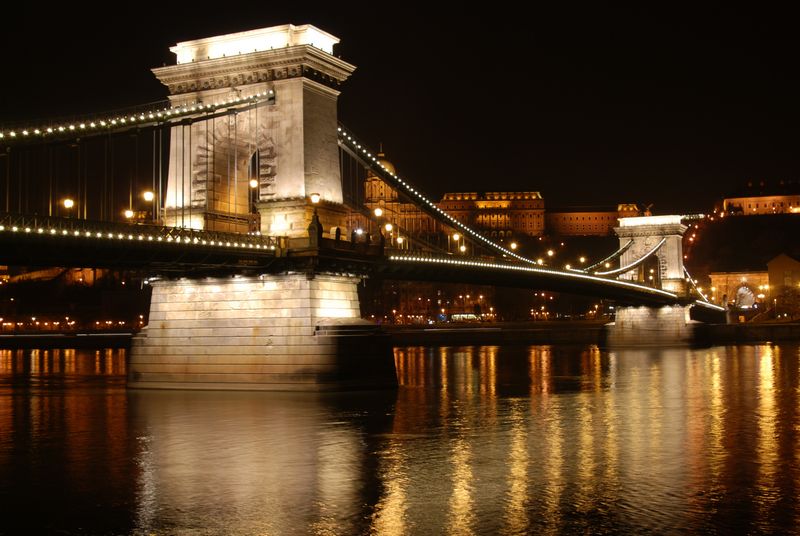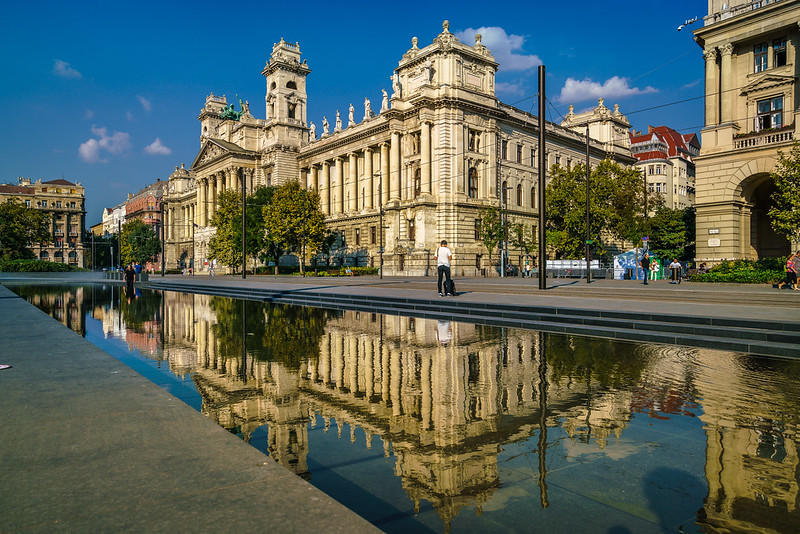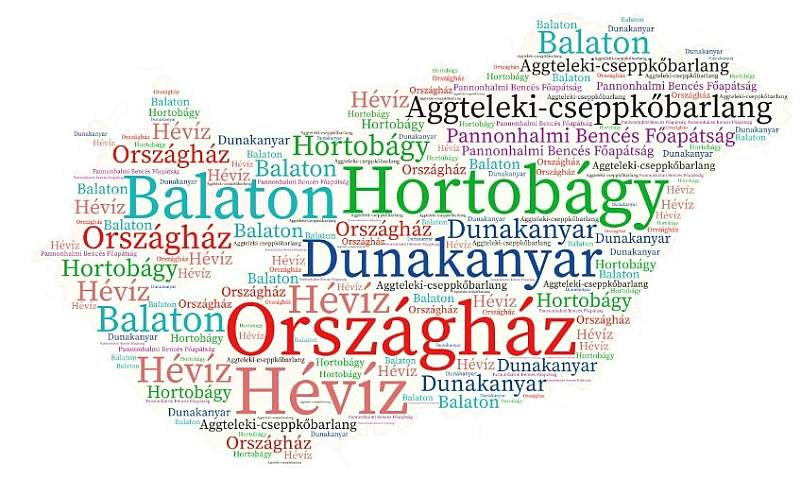One of the most amazing cities in Europe!
Budapest, adorned with its magnificent blend of architectural marvels, thermal baths, and Danube River charm, undeniably ranks among the most captivating cities in Europe.
A Cosmopolitan Gem on the Danube
Introducing Budapest
Welcome to Budapest, a city that combines cosmopolitan charm, romantic allure, and breathtaking beauty effortlessly. Nestled along a graceful curve of the Danube River, Budapest captivates visitors with its stunning setting, flanked by the majestic Buda Hills to the west and the sprawling Great Plain to the east. Prepare to be enchanted as you explore this vibrant capital, where verdant parks, captivating museums, scenic river cruises, invigorating thermal baths, and a pulsating nightlife await.
A City of Change and Contrasts
Budapest today
As Budapest stands proudly as the capital of one of the EU’s accession countries, it is worth exploring the city’s current state and journey since joining the European Union in 2004. While some argue that little has changed, asserting that Budapest remains the same as it was yesterday and will be tomorrow, the reality is that the city has undergone significant transformations.
Economic Progress and Tourism Boom
Budapest has witnessed positive shifts in various aspects of its economy. Unemployment rates and inflation have declined, while real incomes and tourism figures have notably increased. Though accompanied by a visible influx of lively British visitors, the rise in tourism has brought economic benefits to the city. Budget airlines such as Ryanair, SkyEurope, EasyJet, and Wizzair have established routes to Budapest. They provide affordable travel options for families, friends, and couples.
Urban Redevelopment and Booming Property Market
The cityscape of Budapest is undergoing a remarkable transformation, with extensive urban redevelopment projects enhancing its appeal. Certain areas have been revitalized, showcasing a vibrant new face. This rejuvenation has led to a surge in property prices, reflecting the growing interest and investment in the city’s real estate market.
Socioeconomic Discontent Persists
Despite the positive indicators, it is important to note that overall happiness among Hungarians remains elusive. Dissatisfaction persisted throughout the years, evident even during the socialist era when Hungarians defied the barbed-wire fence separating them from Austria. A poll conducted in mid-1993 revealed that a staggering 76% of Hungarians were “very disappointed” with capitalism and their living standards. Fast forward more than a decade, with improved living conditions, including increased access to cars, foreign travel, and better meals, a recent survey by the public-policy think tank DEMOS Magyarország found that the majority of Hungarians remain “elégedetlen” (dissatisfied or disgruntled). Only 36% expressed satisfaction with their quality of life, significantly lower than the EU average of 73%.
The Intrinsic Nature of Discontent
Understanding the root of Hungarian dissatisfaction requires delving into their history, art, music, and the concept of “honfibú.” This deep-rooted discontent has persisted for centuries, becoming integral to the social fabric and the collective psyche. While progress has been made, contentment seems elusive for the Magyar people.

Conclusion
Budapest today is a city of contrasts. It has experienced positive economic changes, a thriving tourism industry, and embarked on ambitious urban redevelopment projects. However, the enduring dissatisfaction among Hungarians raises intriguing questions about the nature of happiness and contentment. As Budapest continues to evolve, it remains a city where tradition meets progress, and the pursuit of happiness intertwines with a complex historical legacy.
IDENTITY
A Diverse and Cultured City
With a population of approximately 1.75 million, Budapest is home to nearly one-fifth of Hungary’s population. Most of its inhabitants are Magyars, an Asiatic ethnic group with elusive origins and a language unrelated to Indo-European languages. The population density in Budapest is significantly higher than the national average, with 3,333 people per square kilometer compared to the country’s average of 109 per square kilometer.
Budapest’s ethnic makeup closely mirrors that of the entire nation, as reflected in the 2022 census. Over 92% of the population identifies as ethnically Magyar. Other minority groups include Germans (2.6%), Serbs and other South Slavs (2%), Slovaks (0.8%), and Romanians (0.7%). The official figure for the Roma population stands at 1.9% (approximately 193,800 people), although some sources suggest the number could be twice as high.
Life expectancy in Budapest is relatively low by European standards, with men averaging just over 68 years and women almost 77 years. Hungary also has one of Europe’s lowest rates of natural population increase, at 9.76 per 1000 people, resulting in a population growth rate of -0.26%. Tragically, the country also experiences one of the highest suicide rates.
Hungary prides itself on being a highly cultured and educated society, with a literacy rate exceeding 99% among individuals aged 15 and older. Education is compulsory for ten years until the age of 16. Around 65% of the population has completed secondary school, while 10% hold university degrees. Notably, a significant portion of university graduates specialize in engineering and economics. Budapest is home to 19 universities, with the most prestigious institutions, such as the Loránd Eötvös Science University (ELTE), the Semmelweis University of Medicine (SOTE), the Budapest Technical and Economic Sciences University (BME), and the Budapest University of Economic Sciences (known as ‘Közgáz’), being located in the capital.
Practical considerations have historically influenced religion in Hungary. Catholicism gained dominance over Orthodoxy under King Stephen I, while the Protestant movement gained popularity among Hungarians in the late 16th century. However, during the Catholic Counter-Reformation under Habsburg rule, many Hungarians reverted to Catholicism. The Turkish occupation in the 16th and 17th centuries led to forced conversion to Islam. As a result, Hungarians tend to have a pragmatic approach to religion, characterized by a lack of religious bigotry. This attitude has been suggested to contribute to Hungary’s success in science and mathematics. Christian churches in Budapest are often sparsely attended, even on significant holy days. In contrast, the Jewish community in Budapest has experienced a revitalization in recent years, primarily due to an influx of Orthodox Jews.
Approximately 52% of Hungarians in Budapest identify as Roman Catholic, 16% as Reformed (Calvinist) Protestants, and nearly 3% as Evangelical (Lutheran) Protestants. Additionally, there are smaller congregations of Greek Catholics (2.5%) and Orthodox Christians, as well as other Christian denominations (1%). The Jewish population in Hungary, though not always religiously observant, numbers around 80,000, significantly lower than the prewar population due to wartime events and emigration. Most of Hungary’s Jewish population, nearly 90%, resides in Budapest.
Conclusion: Budapest, a city characterized by diversity, cultural richness, and open-mindedness, reflects Hungary’s multifaceted society.

Social Norms
LIFESTYLE
A Unique Blend of Reserve and Warmth
Hungarians, especially those from Budapest, are known for their reserved nature, setting them apart from the extroverted Romanians or sentimental Slavs who express their emotions readily. Politeness and formality are highly valued, reflecting a genteel approach to social interactions. It is important to dispel the notion of the impassioned, carefree, Gypsy-fiddling stereotype as it is far from reality. Hungarians often carry a sense of honfibú, a patriotic sorrow infused with a touch of blues, which has permeated their national identity for centuries.
This underlying temperament predates the communist era referred to as “az átkos 40 év” (the accursed 40 years). It is exemplified in a story recounted by the late US foreign correspondent Flora Lewis in Europe: A Tapestry of Nations. In the early 1930s, she shared the tale of a haunting song called “Gloomy Sunday” that reportedly moved people in Budapest to the point of rushing to commit suicide by jumping off a Danube bridge. This melancholic strain in the Hungarian temperament has been immortalized through various artistic interpretations, including covers by renowned musicians like Billie Holiday, Sinéad O’Connor, and Björk, as well as in Rolf Schübel’s eponymous romantic drama.
Hungarians exhibit exceptional politeness in social encounters, and the language itself can be courtly, even in mundane situations such as buying goods from a butcher or visiting a hair salon. Men traditionally greet women with the phrase “Csókolom” (meaning “I kiss it,” referring to the hand). Handshakes are profusely exchanged, even among close friends of all ages. While this refined etiquette helps maintain a smoothly functioning society, it can also create a certain distance between “outsiders” (foreigners and even other Hungarians). However, in times of emergency, Hungarians demonstrate exceptional helpfulness, whether it’s aiding accident victims, assisting in pickpocket incidents, or guiding lost individuals.
Similar to Catholic traditions in Spain, Poland, and other countries, Hungarians celebrate “névnap” (name days) in addition to or instead of birthdays. These name days coincide with the Catholic feast day of their patron saint, or, in some cases, non-religious names also have designated dates. Name days hold significance, and it is customary for men to offer women a single blossom as a gesture of celebration. Budapest’s gay and lesbian communities, though active, maintain a relatively low profile compared to Western European capitals. Domestic partnerships are recognized in Hungary, albeit with limited legal rights, and the government is contemplating legislation to align with partnership laws in the UK.
Hungarians typically socialize with friends and enjoy entertainment at cafes and restaurants. If invited to a Hungarian home, bringing a bouquet of flowers (readily available and affordable throughout the year) or a bottle of fine local wine is customary. Conversations can range from religion and politics to debates about the complexity of the Hungarian language compared to Japanese and Arabic. However, discussions about money are considered sensitive and best avoided. Traditional Hungarian etiquette discourages discussions about wealth and ostentatious displays of jewelry or attire.
Hungarians hold a deep affection for animals, and Budapest is home to numerous pet shops known as “állatdíszhal bolt,” where one can find a variety of pets ranging from puppies and hamsters to tropical fish. Dogs hold a special place in the hearts of Budapesters, with indigenous breeds such as the mop-like puli herding dog, the sleek vizsla, or the giant white komondor sheepdog capturing the attention of people of all ages. Warm weather brings out a more relaxed side of Hungarians, leading to public displays of affection that can be observed on the streets. However, it is worth noting that in the more secluded corners of Budapest’s parks and on Margaret Island, one may come across more passionate displays of affection.
In conclusion, Hungarian culture is a captivating blend of reserve and warmth, shaped by a unique history and social norms that contribute to the city’s distinct character.

Fashion in Budapest
FASHION
A Blend of Casual and Eclectic Styles
Budapest embraces a casual dress code, with summer attire often pushing the boundaries of brevity even by Continental European standards. It is common to see people dressed in denim, including opera-goers. Men need not worry about bringing neckties as they are rarely required. As in any city, Budapest has its own fashion boutiques and a thriving community of local designers.
Keep an eye out for unique pieces from talented local designers such as Anikó Németh, known for her funky creations, and Tamás Náray, who offers high-fashion ready-to-wear and accessories after honing his craft in Paris. For those with a penchant for Art Deco-inspired fashion, wunderkind Katti Zoób’s geometric designs are a must-see. Her spring/summer collection recently gained attention through the Magyar Magic – Hungary in Focus roadshow in the UK.
Retro fashion from the 1950s to 1970s and fetishist elements like leather and military-inspired pieces are currently in vogue, as evidenced by the offerings in used or “second-generation” clothing shops like Iguana and Ciánkáli. However, it’s important to note that individual style choices may vary among the masses.
Regarding popular retailers, the Brussels-based C&A, known for its accessible fashion, has expanded with three new stores in Budapest. Additionally, the Spanish fashion chain Zara, beloved by many for its trendy and affordable clothing, has opened a large 2,400-square-meter outlet on Váci utca, a popular shopping street in Budapest.
Whether seeking unique local designs, retro treasures, or fashion from renowned international brands, Budapest offers a diverse fashion scene that caters to various tastes and preferences. Explore the city’s boutiques and stores to discover the perfect additions to your wardrobe.
The Thrill of Sports in Budapest
SPORT
From Football to Water Polo and More
Sports hold a special place in Hungarians’ hearts, who enthusiastically participate in spectating and participating. Football and water polo reign as the most popular spectator sports, capturing the nation’s attention. However, sports like motor racing, horse racing (trotting and flat racing), and competitive chess, known as sakk, also have their devoted fan bases.
Football enjoys an unrivaled status as Hungary’s favorite sport. The legendary “match of the century” at Wembley in 1953, where the Magic Magyars triumphed over England with a score of six goals to three, still resonates in conversations today. This historic victory marked the first time England experienced a home defeat. Hungary boasts a dozen premier league football teams, including four based in Budapest’s capital. Among them, Ferencváros stands out as a perennial fan favorite.
Water polo is significant in Hungary’s sporting culture, with the nation’s teams consistently dominating the European Championships (winning 12 times) and the Olympic Games (winning eight times) over the decades. Witnessing a professional or amateur water polo match is a thrilling experience, offering the chance to marvel at the skill and intensity of this exciting seven-a-side sport. Plus, there’s no denying the entertainment value of watching athletes in skimpy bathing suits engaging in spirited competition.

For motorsport enthusiasts, the Formula 1 Hungarian Grand Prix serves as a highlight of the sporting calendar. Taking place near Budapest in August, this highly anticipated event attracts both local and international fans, showcasing the pinnacle of speed, skill, and engineering in the world of racing.
Hungarians embrace various sporting events, creating a vibrant sports scene that caters to diverse interests. Whether you’re attending a football match, cheering on water polo players, experiencing the thrill of motorsport, or immersing yourself in the strategic world of competitive chess, Budapest offers many opportunities to enjoy the excitement and camaraderie of sports.
The Linguistic Landscape of Hungary
LANGUAGE
Hungarian, a Unique Challenge
Hungarians take pride in claiming that their language ranks among the world’s most difficult, alongside Japanese and Arabic. While all languages challenge non-native speakers, Hungarian can be particularly daunting to master. However, this should not deter you from attempting a few words and phrases. Even a basic effort to speak Hungarian is highly appreciated by locals, who may view it as a compliment and will be incredibly supportive and encouraging.
Historical factors, including the compulsory study of Russian in schools until the late 1980s, have contributed to Hungarians not being known for their linguistic prowess. Even when they have some knowledge of a foreign language, they may lack practical experience and feel hesitant to speak it. Nevertheless, trying a few words in Hungarian (magyarul) will leave a positive impression and foster goodwill.
German has traditionally been the most useful foreign language for communication in Hungary. Historical ties, geographic proximity, and the fact that German was the preferred language among the literati until the early 20th century has given it a semi-official status. However, with the advent of the Internet and increased travel opportunities, most young people now possess at least a basic understanding of English. Older generations are more likely to speak German. If you urgently need to communicate in English, seek out individuals under 25 who are likelier to be proficient in the language.

It is advisable to avoid using Russian for communication. There is a sense of national paranoia surrounding the language, and many Hungarians take pride in how little they know despite years of study. Italian is gaining understanding due to the influx of tourists, while French and Spanish are not widely spoken and may not be of much practical use.
While Hungarian presents challenges, particularly in fluency, embracing a few phrases will go a long way in fostering connections and leaving a positive impression during your time in Hungary.
Andrássy Avenue Architecture Buda Buda Castle Budapest Budapest attractions Budapest public transport Budapest travel guide City Park culture Danube River Dohány Street Synagogue education events festivals Fisherman's Bastion Gellért Hill Heroes' Square history Hungarian cuisine Hungarian National Gallery Hungarian Parliament Hungarian State Opera House Hungarian wines Hungary Landmarks local customs Margaret Island Matthias Church Museum of Fine Arts museums nightlife noble rot Pest ruin pubs Sightseeing St. Stephen's Basilica Szentendre Sziget Festival thermal baths transportation travel travel guide twin towns Wine Tasting